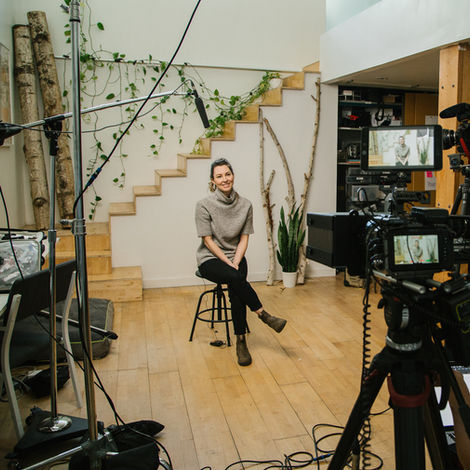
SYNOPSIS
What is happening to us as we remove ourselves from nature and place ourselves into high-rises of steel and glass? What are the physiological tolls this displacement takes?
Outside In examines the hard science behind a movement of healthy home design called biophilia, which suggests that building healthier homes can affect positive changes in our blood pressure, heart rate and stress hormones.
The film features interviews with renowned architects about the future of biophilic design, introduces viewers to homeowners experimenting with biophilic principles, and showcases Jennell Stanley, interior designer and mother, and her process in building a biophilic home from the ground up, focusing on the health of her young family.
THIS GOES BEYOND MODERNIST DESIGN
We’ll visit a range of architectural homes to see how they use of sound and light can work in symphony with the natural environment. We’ll step inside sustainable dwellings and workspaces to show how using colour, pattern and texture can make us better, healthier, more creative people. And finally, we’ll visit a living lab that aims to distill biophilic principles for the masses in the same way Ikea democratized modern furniture.
Outside In will interview B.C’s most respected doctors, architects, and designers in the field of biophilia. By examining the evolution of shelter through the lenses of science, design, health and culture, we will uncover how and why we live the way we do and why making a change is urgent.
WHAT IS BIOPHILIA?
Biophilia, by its most literal definition, is the love of nature. But the term encompasses much more than superficial human admiration.
Let us start with a bit of unforgetting; Humans are nature. We are interconnected with the plants, animals, streams, and soils that have sustained us as we evolved to where we are today. Like any living thing, we are hardwired to constantly read and react to the natural world to maintain our safety and prosperity. For example;
-
Dark clouds = danger
-
Flowers = future food
-
Low sun = prepare for the night
-
Birds = food source nearby
-
Paths = others have prospered here
The cues in nature that we continuously take in through our senses are the subconscious score that sets our psychological and physiological state.
The 20th century triumph of design and engineered was the separation of humans from the variability of nature in the built environment.
Unfortunately, our evolved response to a lack of nature is to prepare for danger through our physiological and psychological stress responses. In this way biophilia is not so much a love for nature, but a need for nature. For if nothing else lives there then why would we expect to prosper?

















